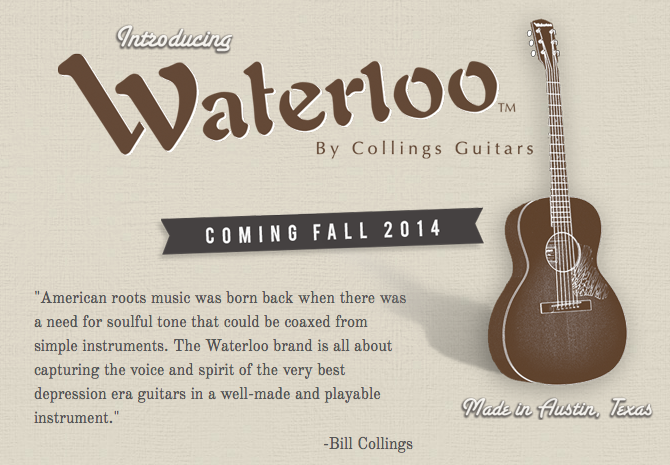Entries in guitar (97)
Tuning up
I got a new gadget in the mail today: a Keyer Quick-Clip tuner. It's an interesting concept that uses a little magnet to attach a small tuner to the back of a standard (and commonly used) Kyser Quick-Change capo.
Advantages: Since the tuner is on the capo, and a lot of people already clamp a Kyser to their headstock, it's one less thing clip onto your guitar. I also like that the tuner attaches/detaches easily. Maybe I'll just keep the tuner in my pocket and quickly (magnetically) snap it on when needed.
Disadvantages: You have to use a Kyser capo, although begrudgingly I already sometimes use one (rather than my preferred Elliott/McKinney or Shubb Finetune capos) when gigging, for faster changes.
Someone needs to hack an Elliott or Shubb Fine Tune so that a small tuner can attach magnetically to the back of their respective adjustment knobs.
Update: Here's a similar idea...a tuner that magnetically sticks to the back of a metal tuning machine. This as also an interesting concept, although (a) the tuner doesn't look as good as others and (b) it doesn't look like it would work for open-geared tuners like Waverlys.

BTW, my favorite tuner is the TC Polytune Clip, although I'd like it even better if it artculated in two dimensions rather than just one.
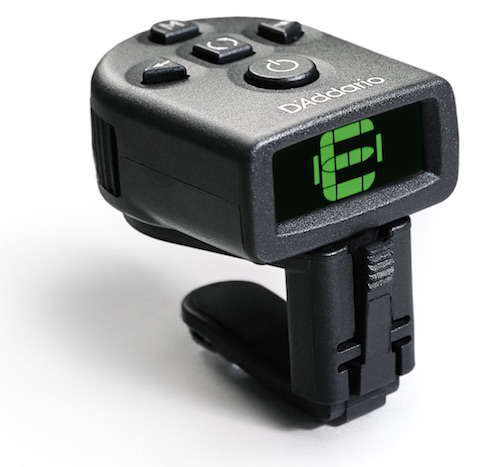 I also like the D'Addario NS Micro Tuner due to its small size and that it can be (relatively unobstrusively) clipped to the back of a headstock. They are also inexpensive (~$12 each, or ~$17 for a 2-pack), so I don't worry about losing/breaking them. Although it's wasteful, I almost think of them as disposable.
I also like the D'Addario NS Micro Tuner due to its small size and that it can be (relatively unobstrusively) clipped to the back of a headstock. They are also inexpensive (~$12 each, or ~$17 for a 2-pack), so I don't worry about losing/breaking them. Although it's wasteful, I almost think of them as disposable.
 Monday, July 18, 2016 |
Monday, July 18, 2016 |  Post a Comment | tagged
Post a Comment | tagged  d'addario,
d'addario,  guitar,
guitar,  guitar gear,
guitar gear,  kyser,
kyser,  tc electronics,
tc electronics,  tuners
tuners These are a few of my favorite strings
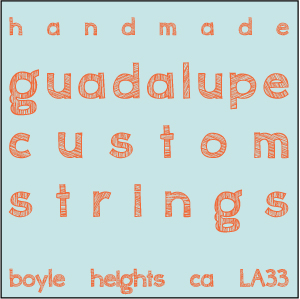 For years I played Martin Marquis 80/20s, although I'm not against trying different strings (see here for my thoughts on Martin Monels; a.k.a. Retros) and have been playing D'Addario EJ12s recently.
For years I played Martin Marquis 80/20s, although I'm not against trying different strings (see here for my thoughts on Martin Monels; a.k.a. Retros) and have been playing D'Addario EJ12s recently.
A few months ago picked up a few sets of strings made by the Guadalupe Custom Strings (update 8/13/18: now The Gabriel Tenorio String Company); these are handmade strings, wound on a round core rather than hex-core, and at $18 a set they weren't cheap. GCS makes all sorts of cool strings for various instruments, and I liked their guitar strings a lot. And I like supporting artisans who produce unique products. But last I checked they were up to $25 a set in the gauge(s) I prefer, which is more than I want to spend. So I just picked up a stack of DR Sunbeams, which are also round core strings available at about $7 a set. We'll see if these stick for a while.
 Sunday, July 17, 2016 |
Sunday, July 17, 2016 |  Post a Comment | tagged
Post a Comment | tagged  d'addario,
d'addario,  dr strings,
dr strings,  guadalupe custom strings,
guadalupe custom strings,  guitar,
guitar,  martin,
martin,  strings
strings What I'm GAS-ing for, summer 2016 edition
Every couple of years I get the urge to make a list of guitars I want (see fall 2012 and fall 2014 editions). I've been playing with a gigging bluegrass band since the start of the year, so I've been playing a lot more guitar and less lap slide, banjo, mandolin etc., and am on the lookout for interesting guitars to expand my tonal palette.
- The Paul Beard A Model Odessey (a round-neck resonator). How cool are these?
- A gyspy jazz guitar. I'm still on the fence about it being an oval- or D-hole, although I do think the D-holes look cooler. Right now the leading contenders are instruments by DuPont and Shelley Park.
- A Waterloo Jumbo King. More Waterloo mojo, in a bigger package.
- A Bourgeois BK. Done! Our NSF grant was funded, so I got summer salary for the first time :-)
- A baritone lap slide; either a Weissenborn-style or Tricone. Something with a 27-28" scale that is tuned to open C (or B?).
- A late 40s to mid-50's Martin D-28. A '53 with a "mystery spruce" top would be perfect. An early D-21 would also fit the bill (1955-1957ish). Done! 1956 D-21. But then I remind myself that I almost always prefer mahogany guitars to rosewood.
- One of the new Collings Traditional dreadnoughts, especially with a Sitka spruce top (since my Collings D1A has red spruce). These look sweet.
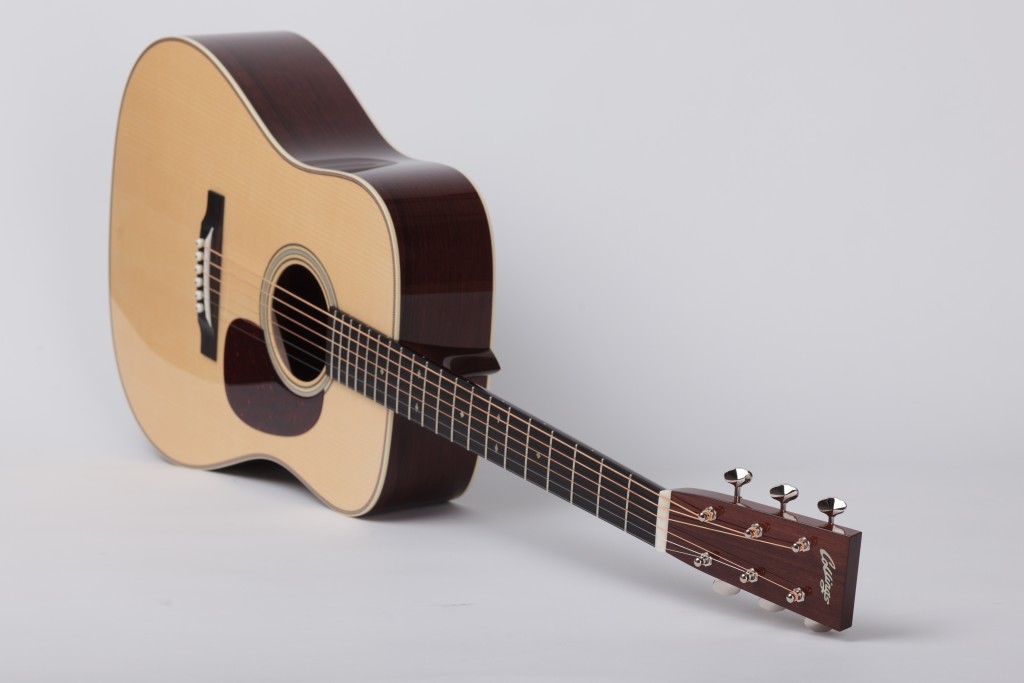
What every jam needs - David Cavins Tenor Guitar #19
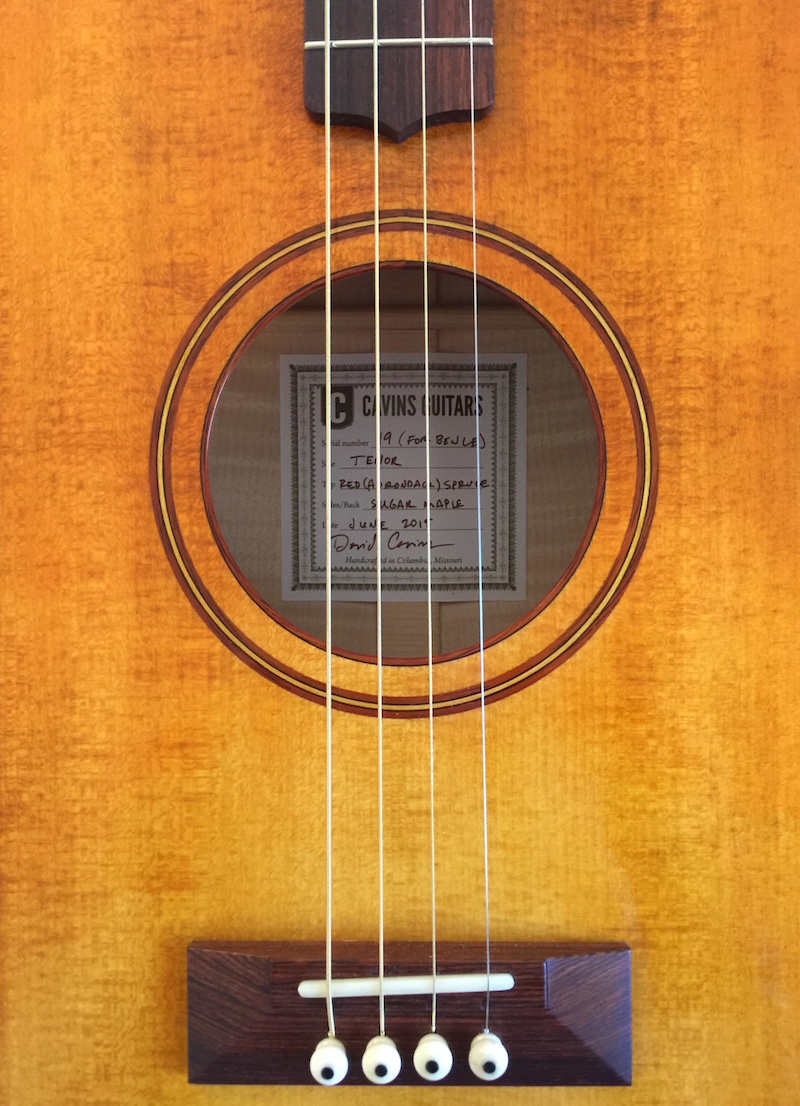
A couple of years ago I reconnected with my college friend and luthier David Cavins, who is based in Columbia, Missouri. David builds beautiful guitars, and although I'm pretty much flush with 6-string acoustics, his tenor guitars piqued my interest. In particular, I wanted to expand my sonic palette while also challenge myself with new tunings beyond 6-string guitar, banjo, and the other instruments I've been fortunate to find across the years. I have a mandolin and although I'm a proficient rhythm player, playing breaks never quite clicked for me. I figured a tenor guitar would give me a comfortable way (as a guitar player) to get more familiar with mandolin-family tunings, while also adding some diversity to our weekly jams (so many guitar and banjo players!). So at the end of last year David started designing a tenor guitar for me.
I previously have posted about the design and build process (see the series of six posts here: 1, 2, 3, 4, 5, and 6), which includes lots of pictures that David send me along the way. Essentially, we each blogged the process in parallel from our perspectives. To briefly review, David's tenors are inspired by a Gibson TG-0 rather than the Martin 0-18T popularized by the Kingston Trio. My guitar is 13" across the lower bout and 3.688" in depth at the endpin, with a scale length of 22.875" and nut width of 1.25". We settled on flamed sugar maple for the back, sides, and neck, with an adirondack spruce top. The binding and other decorative bits are primarily hormigo, and the fretboard and bridge are Honduran rosewood. This guitar has a couple of other unique features, including two subtle "wave " inlays around the perimeter of the back, the strikingly brilliant sunburst shading under the French polished finish, and David's newly-designed adjustable neck joint (see more details about the neck on David's site at the bottom of this page and mid-way down this page).
I received the tenor from David last week and am absolutely blown away by its beauty, and more importantly, by the tone of this instrument. Describing a guitar's tonal qualities is always difficult, especially when I haven't actually played any other tenors and thus don't have a reference point. So I'll just simply say that I can't imagine a tenor sounding any better than this one! At some point I'll try to get around to posting some sound clips, but for now you'll just have to enjoy these pictures.
A couple things I've learned from this process:
1) Working with a luthier on a custom built guitar is a very fun and satisfying experience.
2) David is an extremely talented craftsman, artist, and musician, in addition to being just about the nicest guy you'll ever meet (although I've know this last point since we first met in 1994). If you're looking for a tenor guitar, or auditorium, orchestra, or concert-sized guitar, working with David can't be beat. The balance of tradition, innovation, and responsible choices of sustainable materials in his instruments hits the spot for me, and the design of my tenor guitar is executed into a beautiful sounding, looking, and feeling instrument.
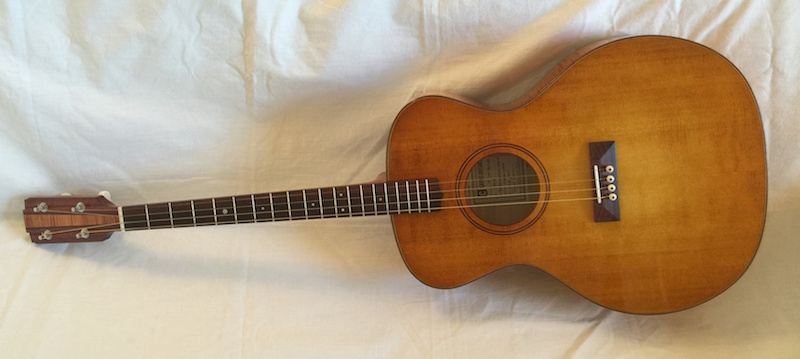
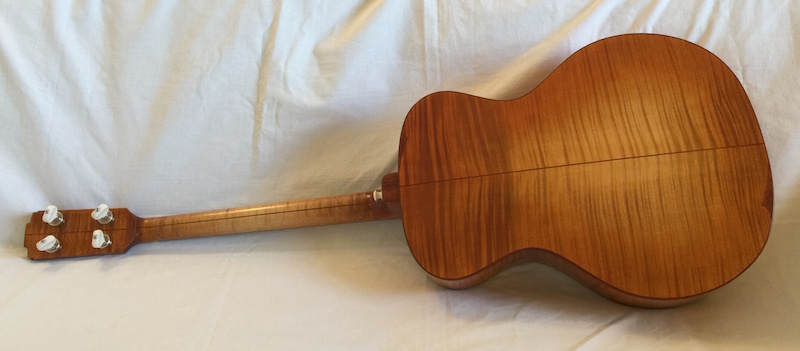
Cavins tenor guitar - Part 6: The shaded finish
This is Part 6 of my series chronicling design, construction, and eventual delivery of a tenor guitar built by David Cavins. See Parts 1, 2, 3, 4, and 5 of this series.
David just posted pictures of the sunburst finish he applied to the tenor guitar; check them out on his blog here. Whoa nelly, that's a fine looking guitar!
Although it's not shown in the pictures below, the bridge has been glued down, and next it will be time for the hardware and set up. It's getting close!
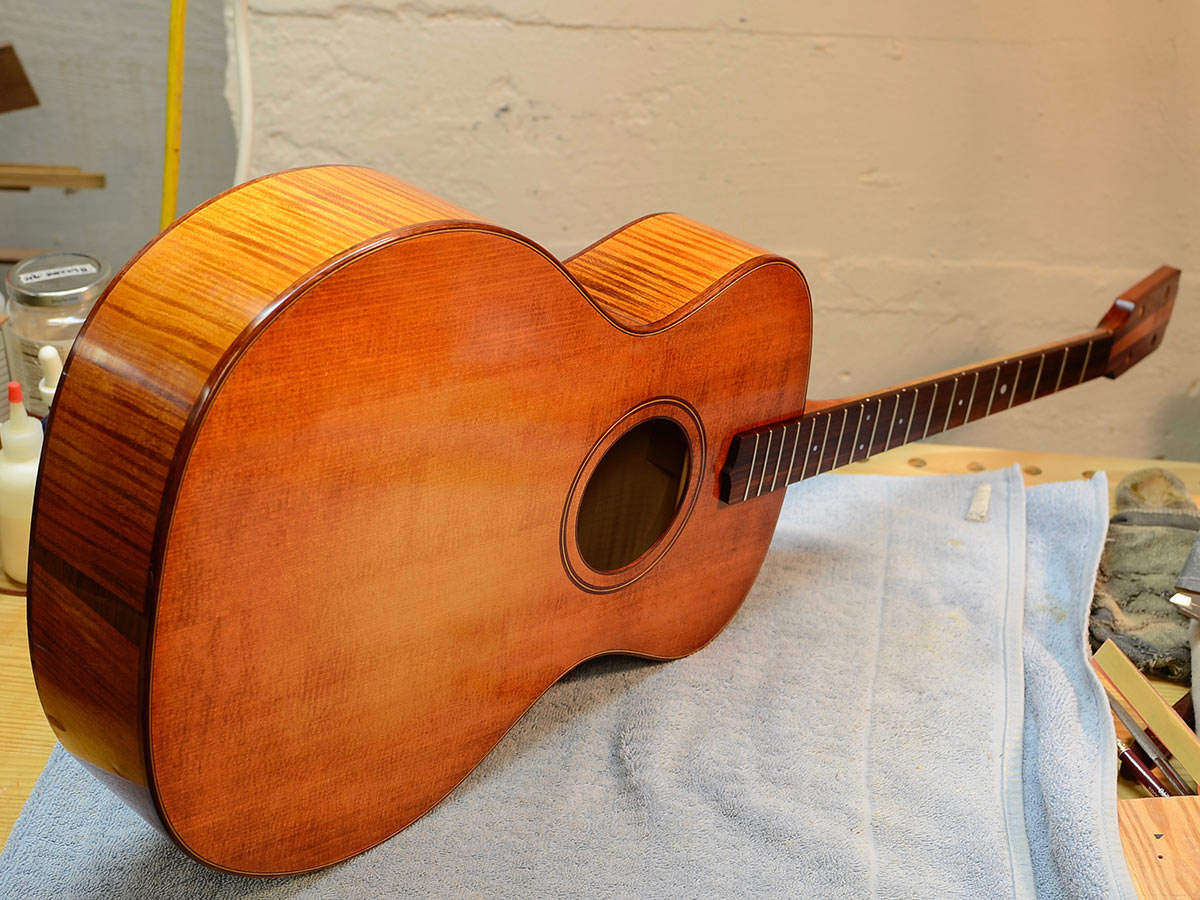
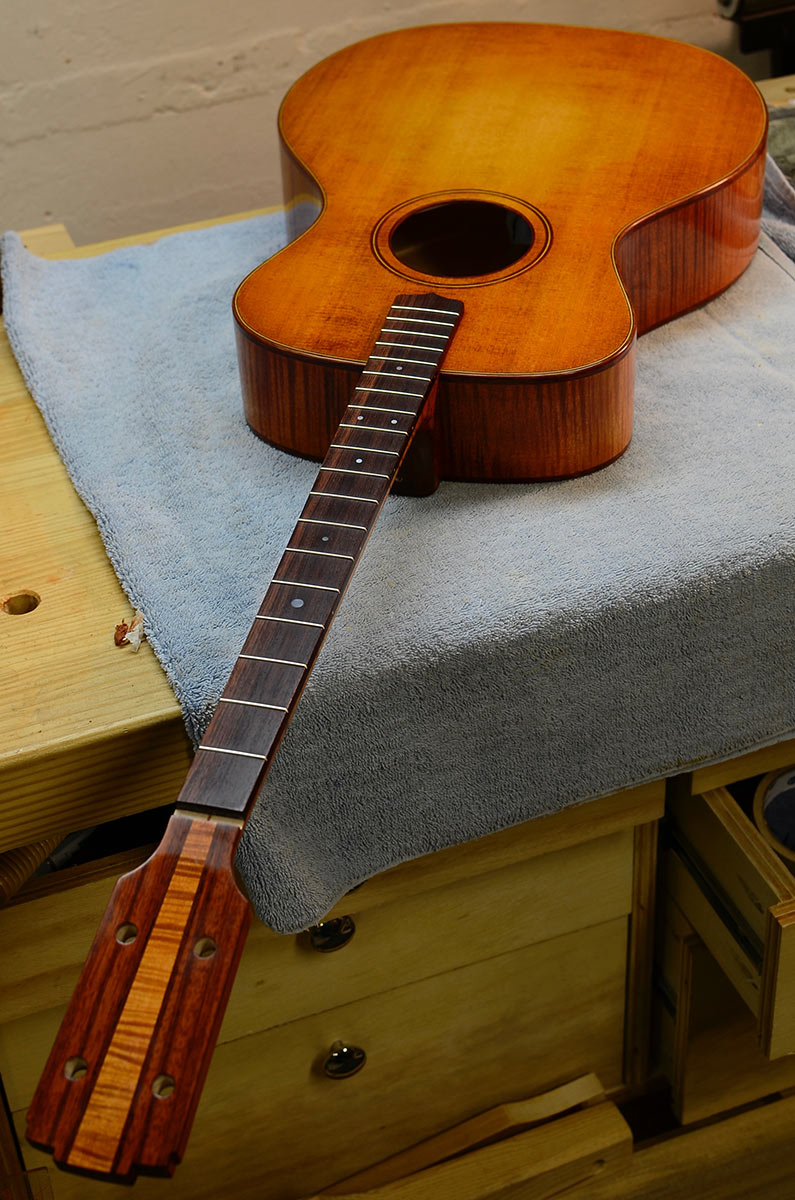
 Wednesday, November 25, 2015 |
Wednesday, November 25, 2015 |  Post a Comment | tagged
Post a Comment | tagged  david cavins,
david cavins,  guitar,
guitar,  lutherie,
lutherie,  sunburst,
sunburst,  tenor guitar
tenor guitar An acoustic oddity - The Rickenbacker 730S Shiloh
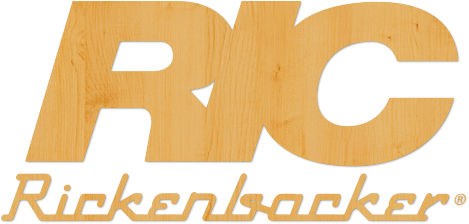 Prelude, part 1 - When I was in college in the mid-90s, all I wanted was a Rickenbacker electric guitar. While most 20-year old guys have pin-ups of women in bikinis in their room, I had a picture of a blonde Rickenbacker 381 on my wall. By the late-90s I was fortunate to be able to get a Rickenbacker 360 (see here), but gradually moved away from playing electric guitar and found the 1-5/8" nut width to be too small, so it moved on to a new home. However, as a fan of the Beatles, the Byrds, Tom Petty, Susanna Hoffs, and the Who, I've always had a soft spot for Rickenbackers.
Prelude, part 1 - When I was in college in the mid-90s, all I wanted was a Rickenbacker electric guitar. While most 20-year old guys have pin-ups of women in bikinis in their room, I had a picture of a blonde Rickenbacker 381 on my wall. By the late-90s I was fortunate to be able to get a Rickenbacker 360 (see here), but gradually moved away from playing electric guitar and found the 1-5/8" nut width to be too small, so it moved on to a new home. However, as a fan of the Beatles, the Byrds, Tom Petty, Susanna Hoffs, and the Who, I've always had a soft spot for Rickenbackers.
Prelude, part 2 - I love mahogany guitars; my main players the last few years have been a Collings D1ASB and some various Martin D-18s (see here, here, and here). I tend to prefer mahogany guitars to rosewood, but over the last few months, the latest bout of GAS had me thinking about rosewood guitars as a way of rounding out my tonal palette. Something with a bit more bottom end than my other guitars, without getting tubby (like some rosewood Martins, at least to my ear). Given my taste for nice Martins and boutique instruments, I spent way too much time browsing at the usual rosewood suspects online: various flavors of new and vintage Martin D-28s, Collings D2Hs, Santa Cruz D/PWs and Tony Rice models, and similar offerings from Huss & Dalton and Dana Bourgeois. Sadly there aren't many good guitar shops in my neck of the woods, so I had resigned myself to waiting for the next time we took a roadtrip or taking a flyer on an online puchase.
* * * * *
Today was the semi-annual Philadelphia guitar show. I usually go to a least one of shows each year, but until last year I had never purchased anything there. This year there were some particular interesting guitars, including a 1947 D-28 (with a refinished back; $8.5k), a 1961 D-21 (~$6k), a 1947 Gibson J-50 ($6.5k), a 1950 J-50 (refinished back; could have been purchased for under $4k), a 1995 custom Martin HD-28S (i.e., 12-fret; didn't ask, but it should have been in the $2-2.5k range), a Gibson Jackson Browne model (i.e., a Roy Smeck-style guitar; $4.1k), a Collings 0002HBaaSB (or some such acronym; a 12-fret 000 with a sunburst sitka top and nice Brazilian rosewood back and sides; $6.8k), a 1953 Martin D-18 (I lusted for this same guitar last time I was at the show, but at $10k it's out of reach and not that much nicer than my '56 D-18), and a Weissenborn Style 4 Hawaiian guitar from the late-1920s ($4k). Other than the Martin HD-28S, most of these are out of my league at this point, so after wandering around the show for a couple of hours I decided to make one more loop around the hall before leaving.
I usually don't pay much attention to the booths that are primarily stocked with electric guitars, but there is usually a vender that specializes in Rickenbackers at the show, and given my affinity for them, I usually at least walk by. I was about to head home when I saw one of my guitar unicorns (i.e., super-cool, but pretty much don't exist): a Rickenbacker acoustic guitar. WTF? Rickenbacker makes acoustic guitars?
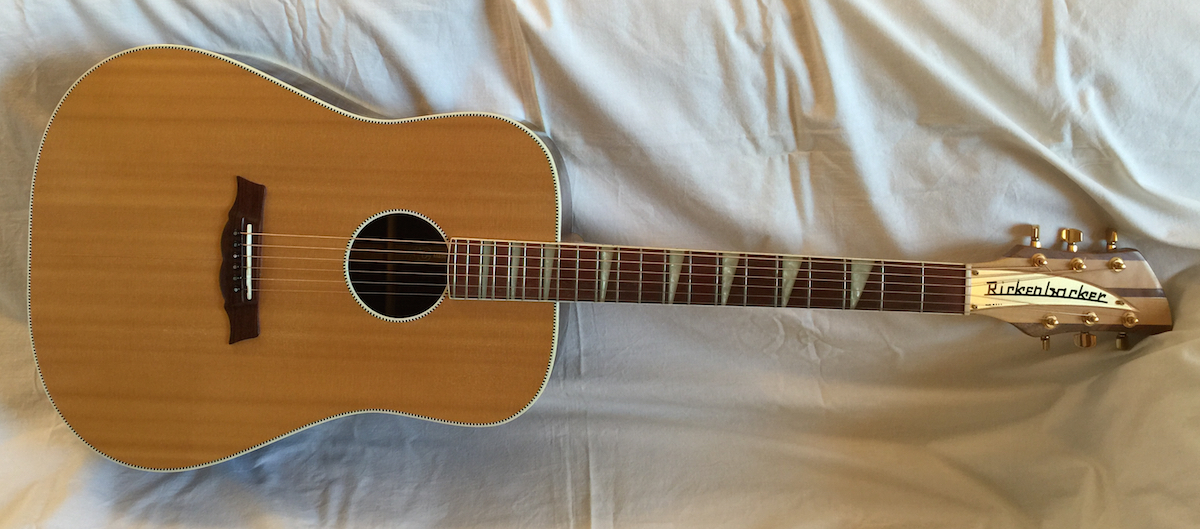
I've vaguely known about these Rickenbacker acoustics for years, but have never seen one in the flesh. And I always figured that (a) they wouldn't sound that good (at least compared to the Martins and Collings that this guitar snob tends to prefer), and (b) that the necks would be too small (they are spec-ed with a 1-5/8" neck like their electric siblings). But how often do you get the chance to play a Rickenbacker acoustic guitar? So I asked if I could take a strum...
It's a Rickenbacker 730S Shiloh, dating from November 2000; a dreadnought with a sitka spruce top and Indian rosewood back/sides, a maple and walnut laminated neck with a rosewood fretboard bound in white and sporting the classic pearloid "shark fin" inlays (very similar, in fact, to my departed 360), with gold Schaller tuners on the traditional Rick-shaped headstock, a rosewood bridge, and white binding with a classy black/white checkered purfling around the body and soundhole. It just oozes with cool.
Holy hell! This thing is an absolute cannon! But the floor of guitar show is always uber-loud thanks to all the wankers cranking up amps (yes, I did hear more than one asshat playing the intro to Stairway today) and I couldn't get a good sense of the tone of the guitar other than sensing that it didn't suck. So I offer to leave my drivers license with the seller so he'll let me take the guitar to a back room that is tucked away adjacent to the men's restroom, where at least it's a bit quieter.
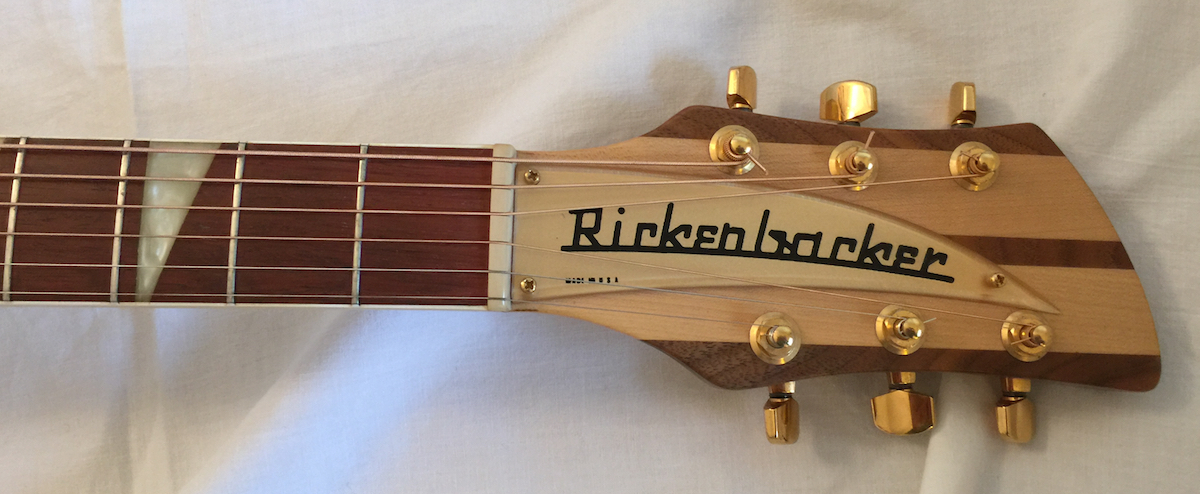
First, the neck doesn't feel tiny in my hands. I prefer 1-3/4" necks usually, and can live with some 1-11/16" necks like the one on my '56 D-18. But I can't believe that I'm finding this 1-5/8" neck to be very comfortable. How can that be? My hand doesn't deceive; the Rickenbacker actually measures at 45mm, which is a smidge over 1-3/4" (yes, this geek carries a small ruler, along with a kit of flat- and fingerpicks, capos, a bar for playing lap steel, and a tuner, when going to the guitar show). So much for the specs on the Rickenbacker page which shows a 1-5/8" neck (the specs also show a 25" in scale, but this guitar measures 25-5/16"). The frets are low and flat, like (surprise) an electric guitar, which takes a bit of adjustment.
Plugging in with Fishman
 How I usually feel about the way sound guys mic my guitar.I haven't touched an electric guitar in years, but recently have become interested in learning about acoustic amplification. The goals are to be able to:
How I usually feel about the way sound guys mic my guitar.I haven't touched an electric guitar in years, but recently have become interested in learning about acoustic amplification. The goals are to be able to:
1) ...plug in when getting on stage for impromtu sets at bluegrass festivals. I'm tired of having to rely on sound guys dialing-in the instrument microphones. They never seem to get the signal hot enough (which is understandable, given the issues with feedback and that they don't have much time to get things set up between sets).
2) ...have a second channel/option when I'm playing out with our band(s). Typically I've used an instrument microphone (Shure SM81) which has worked fine, but having an additional option for more volume while reducing feedback would be nice.
3) ...mess around with this stuff at home, both to (a) get to know the equipment and dial the sound in before heading out to play live, but also to (b) reinforce the sound a bit at jams. So in addition to getting a guitar pickup, I'll need a small acoustic amp.
After spending way too much time researching online, here's what I ended up getting:
Pickup
I decided the best option was a soundhole pickup so I could potentially swap it between several guitars without too much fuss, and ended up selecting a Fishman Blackstack magnetic pickup ($250). These are supposedly a modern take on the classic Sunrise pickup that some of my favorite artists play (e.g., Lyle Lovett, Richard Thompson), and what I like about the Blackstack is that it can be disconnected from its cable and moved between guitars for different mounting strategies with minimal fuss. The Blackstack comes with a 10' cable that can be run out of the soundhole and connected to a standard guitar cable for a "temporary" installation. But Fishman also sells a 22" cable and endpin jack for a more permanent installation ($40). I installed this shorter cable/jack in my Collings CJ, which previously had a pickup so the endpin was already drilled for a jack. When I want to plug in a different guitar, I'll disconnect the Blackstack from the cable in the CJ (which takes a couple of minutes with nimble fingers and a small screwdriver), connect it to 10' cable, and temporarily mount it in another guitar.
Note: I also considered the Baggs M1, M1A, and M80, and Schertler Magnetico AG6, which are similarly swappable between guitars, but ultimately chose the Blackstack due to its similarity to the classic Sunrise pickup. To be fair, the Sunrise system can also be set up to be swappable, but I likely would have needed a guitar tech to do the wiring. With the Blackstack I was able to do it myself in less than 15 minutes.
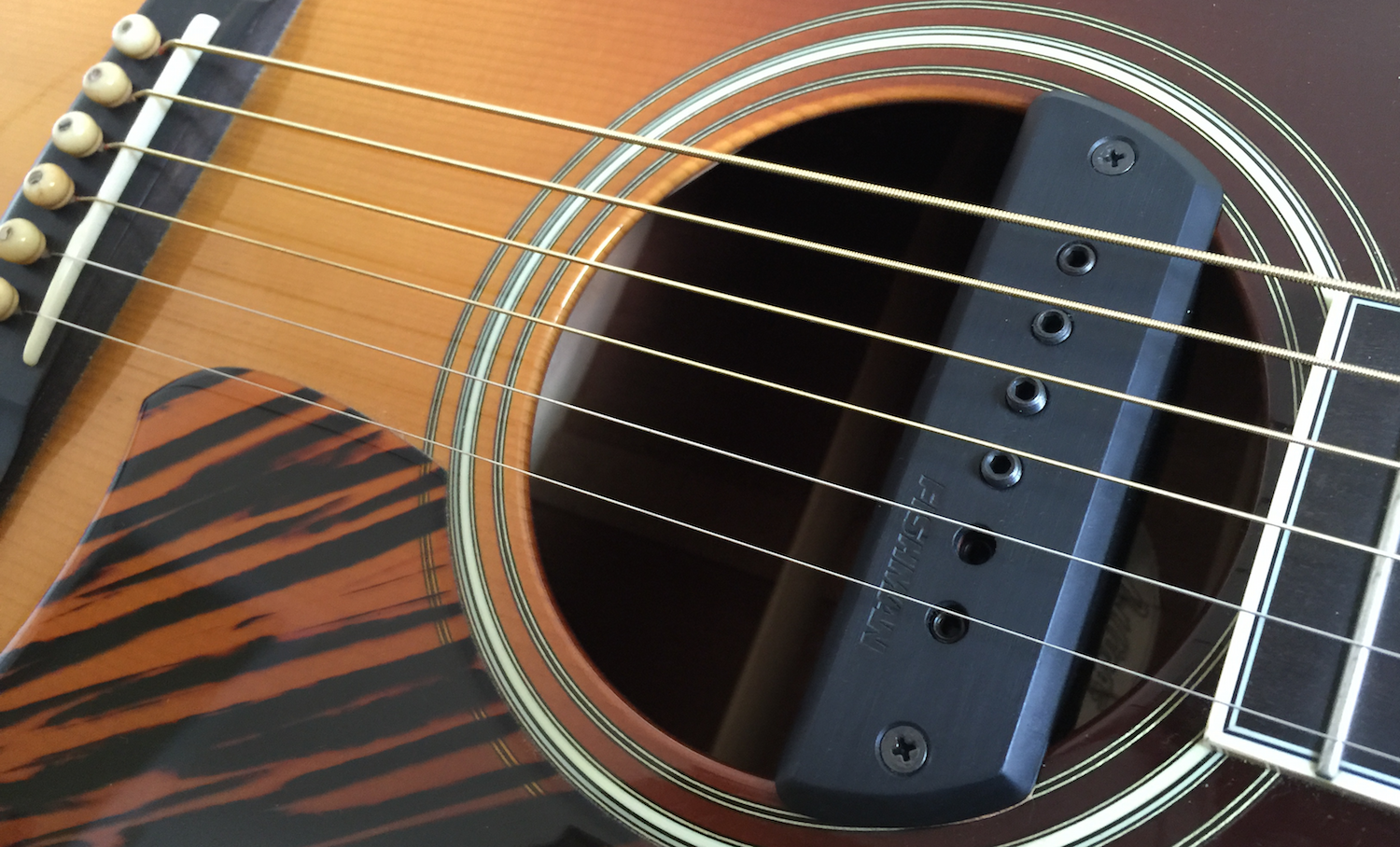
Preamp
Since the Blackstack is a passive pickup and doesn't have any controls, a preamp is a good idea, and I ended up choosing the Fishman Platinum Pro EQ.
 Wednesday, August 26, 2015 |
Wednesday, August 26, 2015 |  Post a Comment | tagged
Post a Comment | tagged  acoustic amp,
acoustic amp,  aer,
aer,  baggs,
baggs,  blackstack,
blackstack,  fishman,
fishman,  guitar,
guitar,  loudbox,
loudbox,  pickup,
pickup,  platinum pro eq,
platinum pro eq,  preamp,
preamp,  schertler,
schertler,  sound reinforcement
sound reinforcement Cavins tenor guitar - Part 5: The closed box and carving the neck
This is Part 5 of my series chronicling design, construction, and eventual delivery of a tenor guitar built by David Cavins. See Parts 1, 2, 3, and 4 of this series.
David recently posted an update of the build on his website. Things are moving quickly, and soon it will be time for the finish to be applied! (see Part 6 for the sunburst finish)
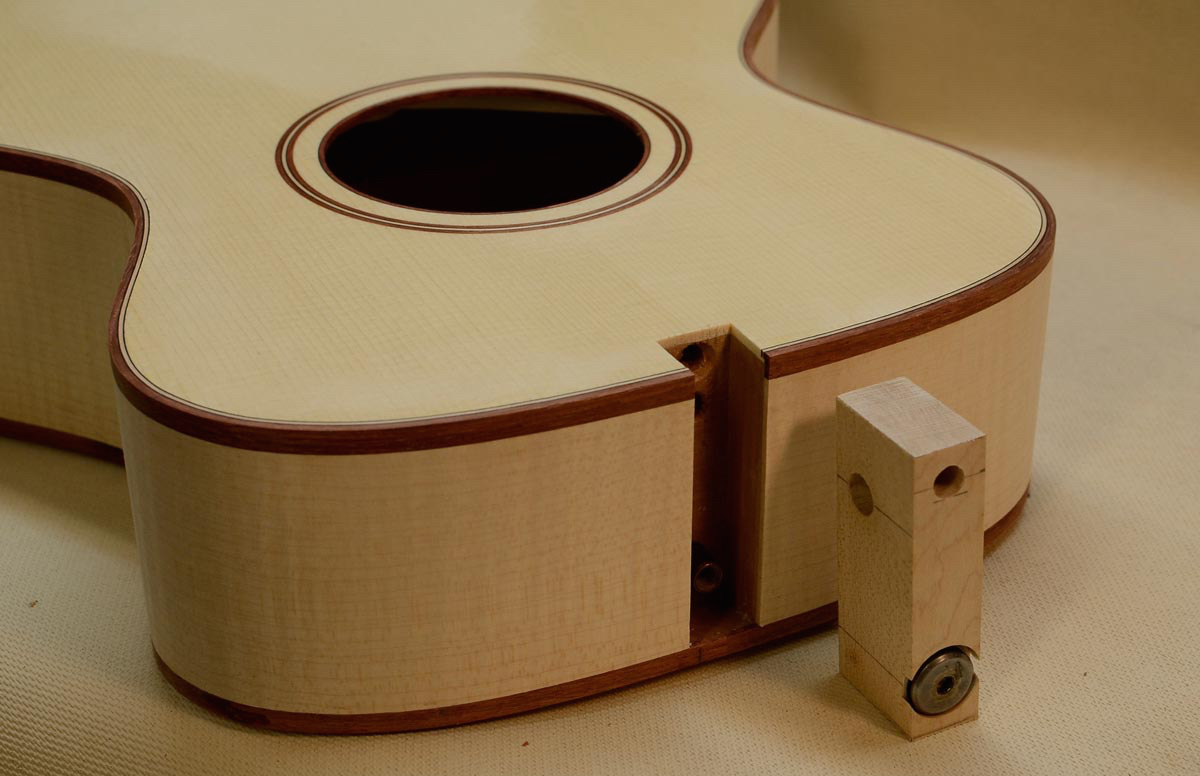
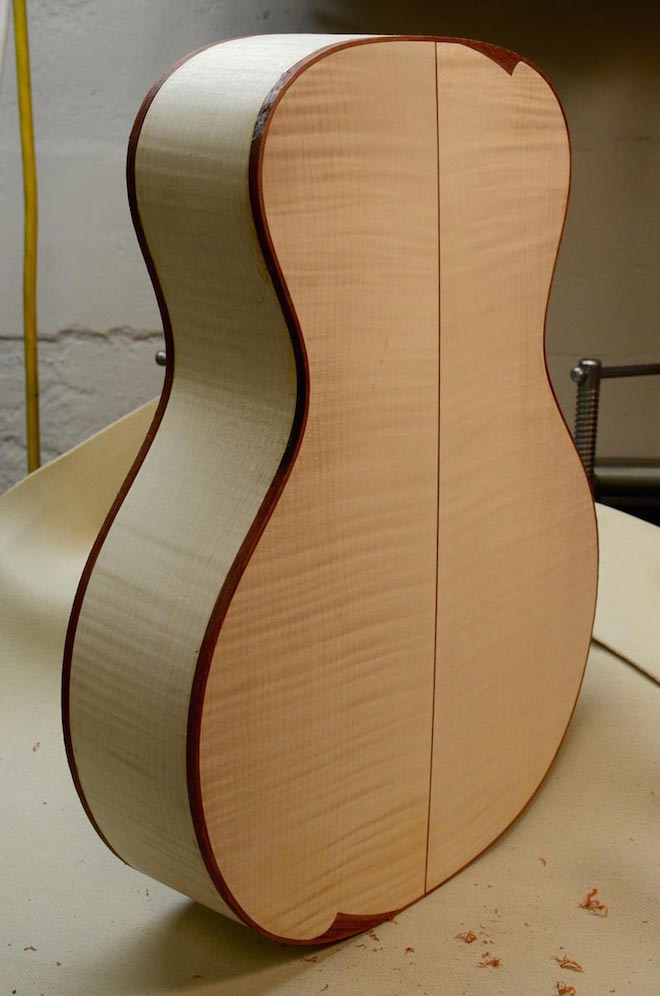
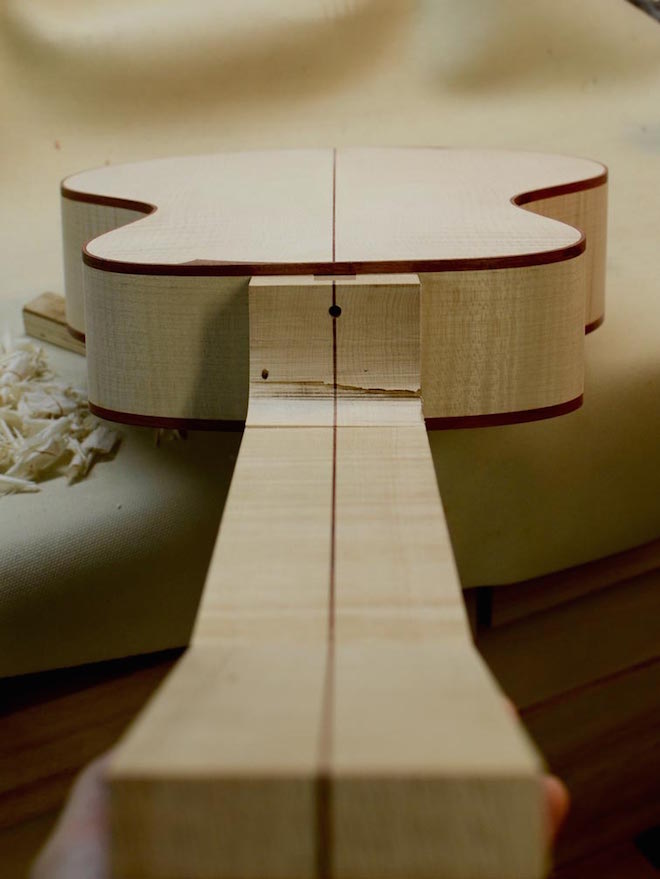
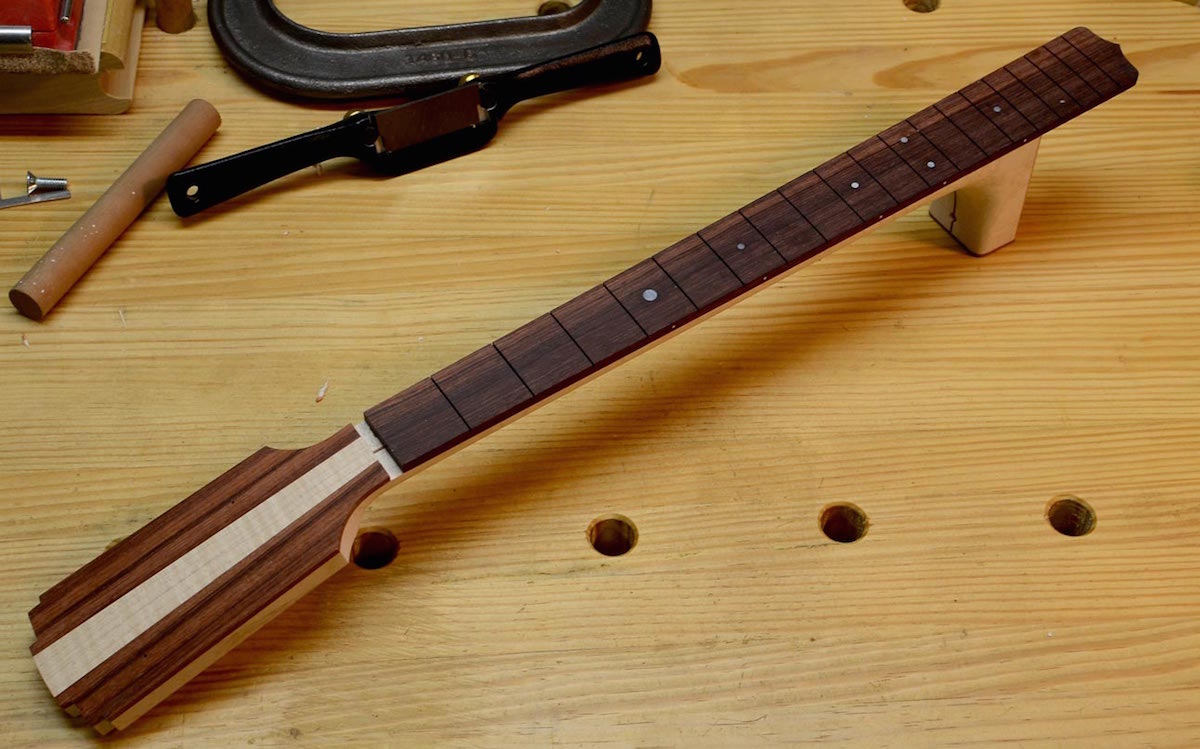
Cavins tenor guitar - Part 4: Finish samples and other details
This is Part 4 of my series chronicling design, construction, and eventual delivery of a tenor guitar built by David Cavins. See Parts 1, 2, and 3 of this series.
A couple of weeks ago, David sent me some samples of sugar maple, finished with subtly different shading, to get my feedback. All of these are beautiful, but I decided to go with the second from the left. This is going to be a stunning guitar!
In addition, we've been talking about neck size and profile, as well as the location of the adjustment bolt for the neck. David is using a system that allows the neck angle to easily be adjusted without removing the neck (and potentially that allows the angle to be adjusted while the strings are tuned to pitch). This bolt could be accessed via the neck block, through the interior of the guitar. But I've decided I want to show off this awesome design feature, and he is building this guitar with the access point at the heel of the neck, where the whole world (or at least people playing the guitar) can see it. With feature this cool, you have to show it off. See more about the neck joint on David's site.
David Dart Style 1 Hawaiian Weissenborn-style guitar
I've been doing some consulting work which has yielded some "fun money," so I've been able to pick up a couple of new lap steel instruments recently. The first was the 1930 National Tricone Squareneck I grabbed at the Philadelphia guitar show in November. Following with my growing interest in the lap steel, I've been wanting a Weissenborn-style guitar as well, and luckily one just fell into my lap (pun intended).
David Dart* is a California luthier who began building in 1966 and has made a few hundred instruments in that time, including guitars, mandolins, and Hawaiian lap steel guitars. His clients have included Ben Harper and David Lindley, and I just stumbled into a used Style 1 Hawaiian (i.e., "Weissenborn-style") all-koa guitar at an amazing price.
Update (3/13/15): Here's an interview with David Dart from the Fretboard Journal.
Read more about this history of Weissenborn-style guitars here, here, and here.
*I bought the guitar used from a shop in Los Angeles and have not met or spoken with Mr. Dart. This info comes from his website and other sources I found online. If you are looking for a similar guitar, I encourge you to commission one directly from him since (a) supporting independent luthiers makes for good karma, and (b) his instruments don't hit the market very often.
Update (2/8/15): As I've been doing more reading on the history of Hawaiian guitar I'm coming to understand that calling these "Weissenborn-style" instruments is inaccurate, although that term is commonly used. Although Hermann Weissenborn certainly made (relatively) many guitars in this style, the design of these instruments was not original to him. Read more here, and also check out the book by Noe & Most (1999), Chris J. Knutsen: From Harp Guitars to the New Hawaiian Family.
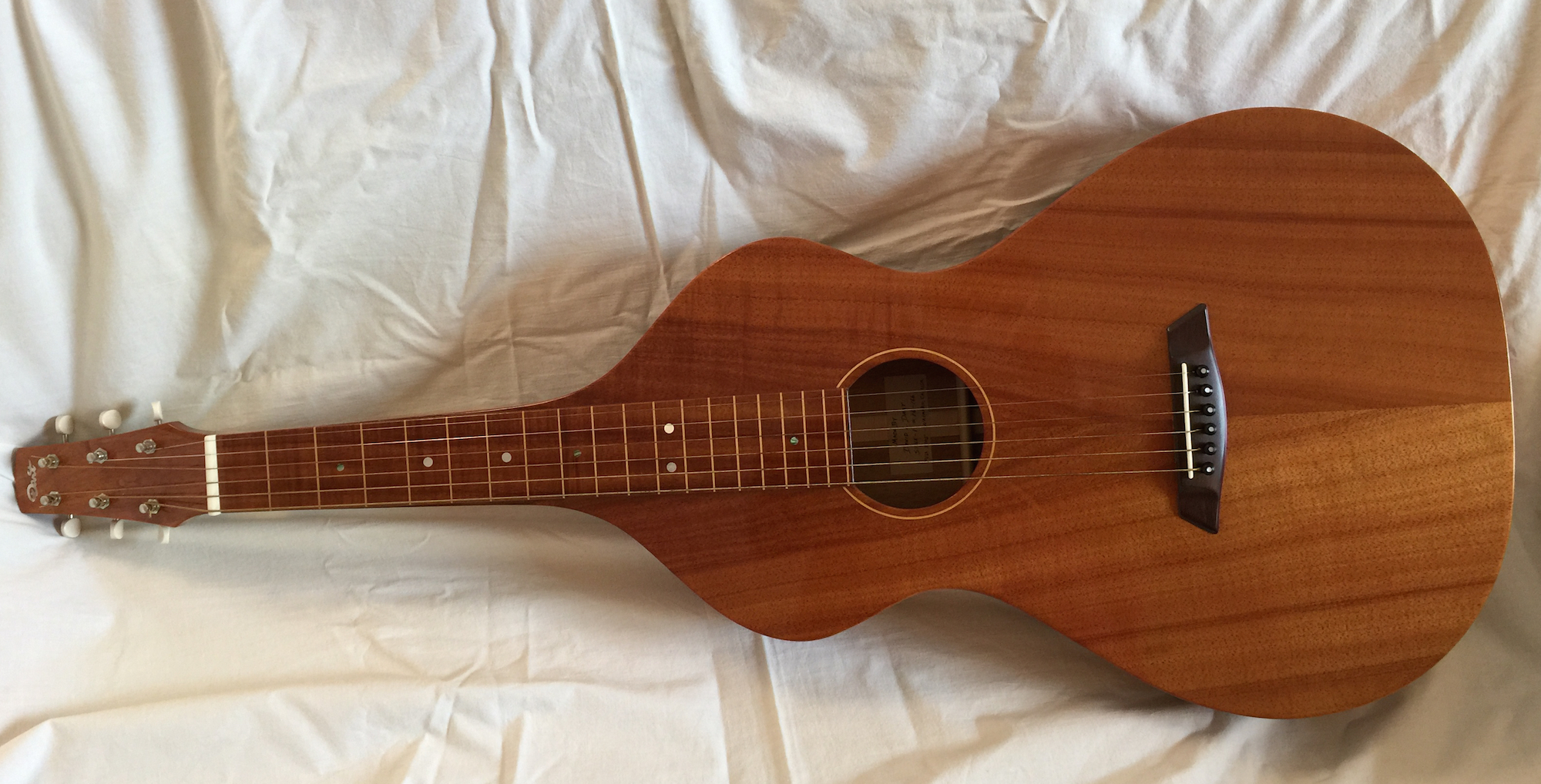

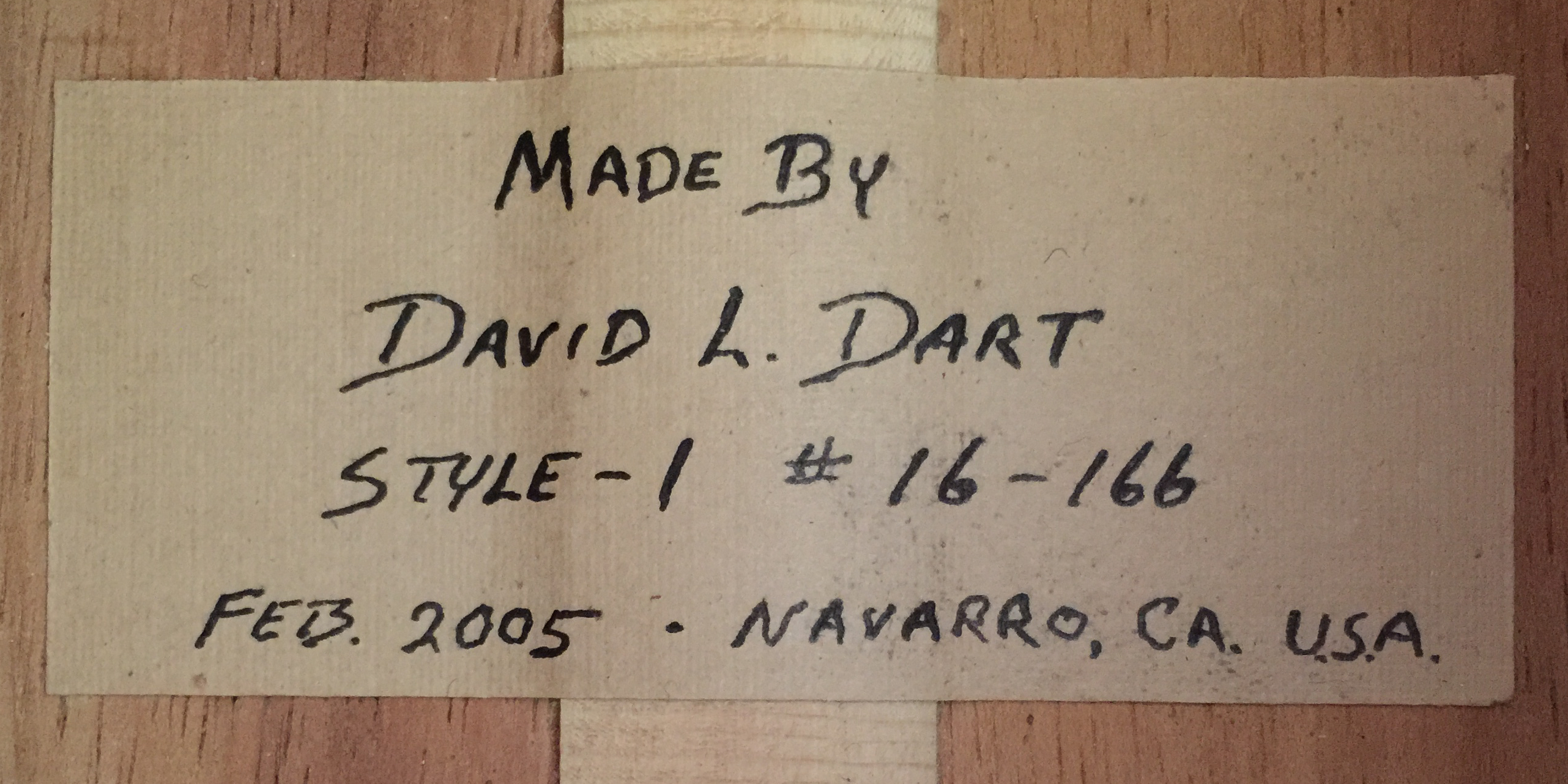
Cavins tenor guitar - Part 3: Design and wood choices
This is Part 3 of my series chronicling design, construction, and eventual delivery of a tenor guitar built by David Cavins. See Part 1 and Part 2 of this series.
We're now a couple of months into the process, and we have finalized most of the design decisions. David has also started construction on the top and back, and is currently getting ready to dive into the neck. Here are the specs:
- Top - Adirondack spruce
- Back, sides, and neck - Flamed sugar maple
- Fretboard and bridge - Honduran rosewood fretboard with pearl dot inlays, radiused; bridge TBD
- Binding and accents - Hormigo center strip down the middle of the neck and back; hormigo and maple rosette
- Headstock veneer - Honduran rosewood or hormigo, with a maple center wedge
- Finish - Light sunburst top, body, and neck
- Hardware - Banjo tuners
While there are still a few design decisions to make, the guitar is starting to come together. David has been documenting the build process on his blog (see here). Here are some pictures I pulled from his site:
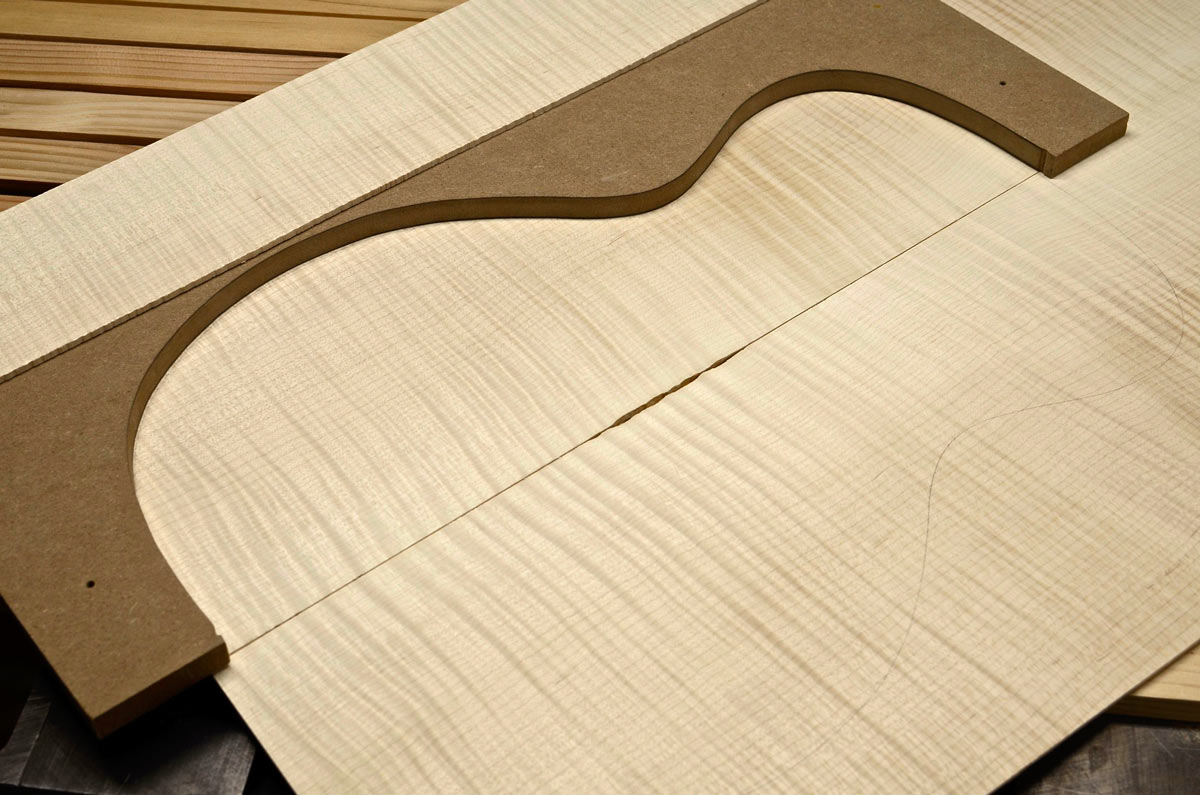
The sugar maple back, getting ready to be joined.
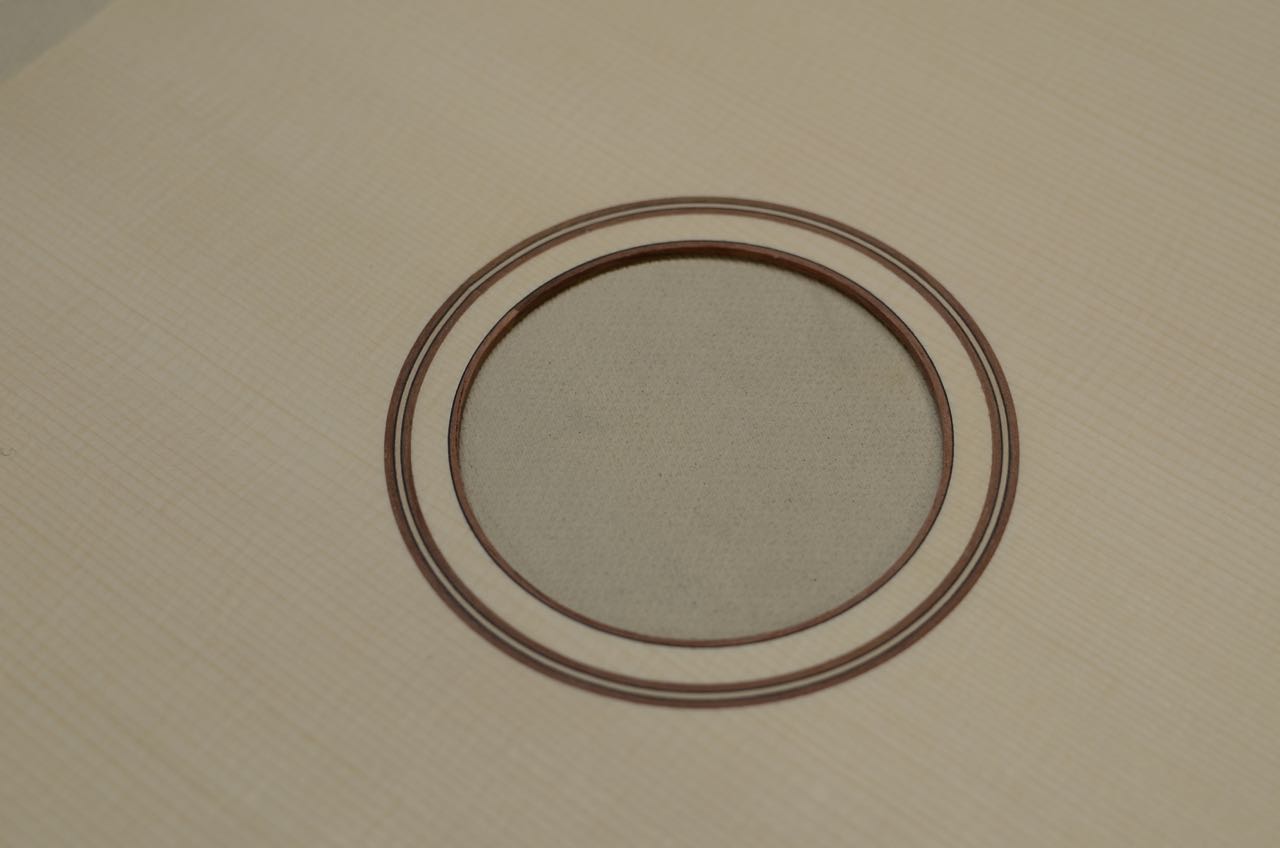
The Adirondack spruce top with the rosette installed.
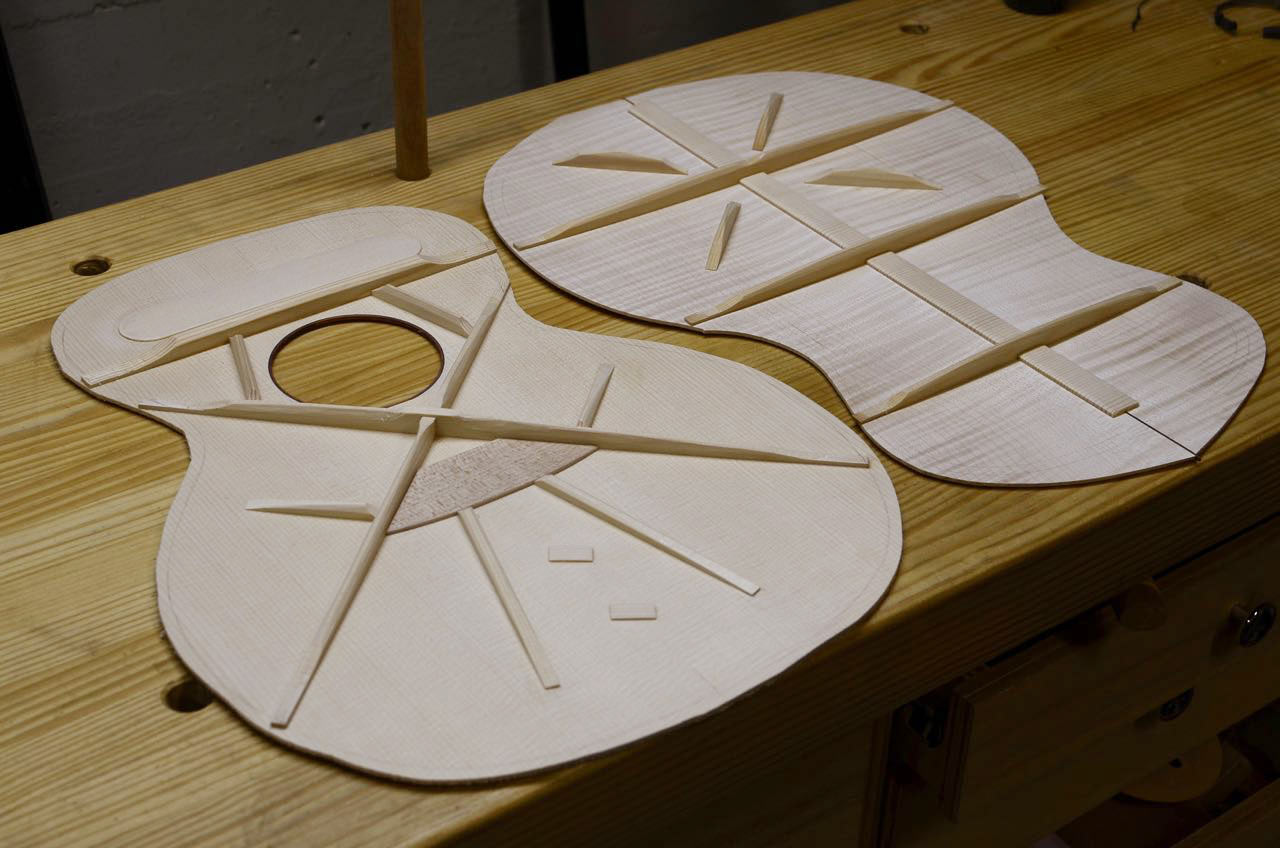
The top and back, with the rough bracing.
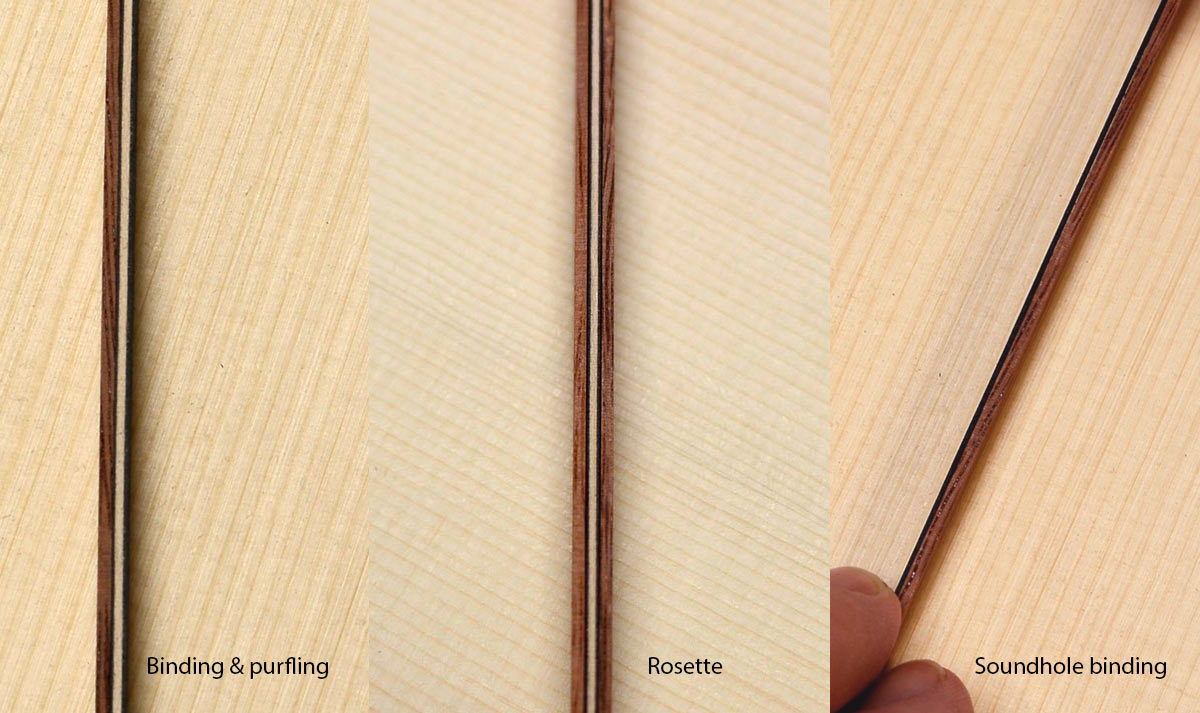
David put these samples together to show the accents. Understated, elegant, and classic.
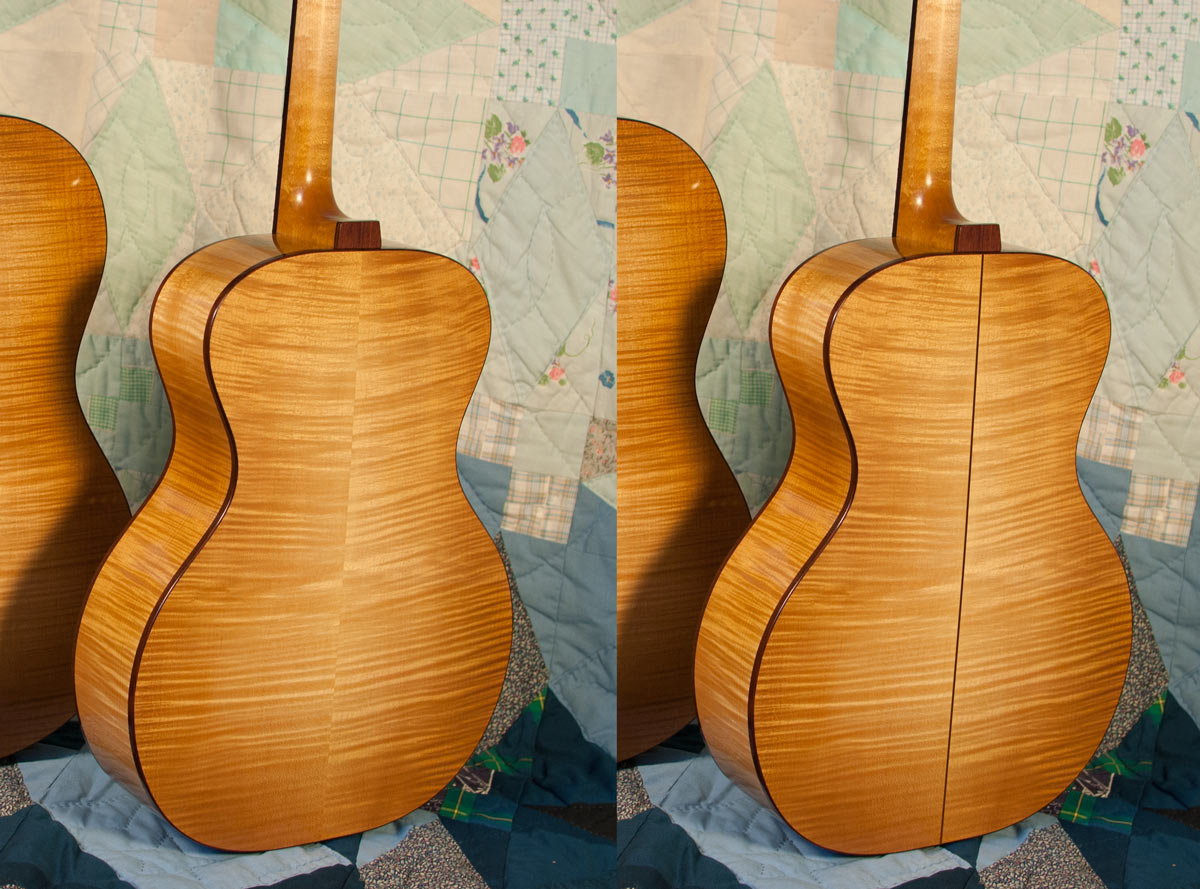
This is a previous tenor guitar he built in 2012, with a light sunburst finish on a sugar maple body. David photoshopped the version on the right to show me what it would look like with a backstrip. Mine will be similar (with the backstrip), with a slightly darker full-body sunburst.
What I'm GAS-ing for, fall 2014 edition
A couple of years ago I posted on "what I'm GAS-ing for..." (i.e., what Guitars I wished I could Acquire, which is a bit of a Syndrome). Here's an updated list of what I'm currently lusting after:
- A Weissenborn-style lap slide guitar. Mission accomplished.
- A 12-fret dreadnought, like a D-18S or Collings D1, or a Gibson Roy Smeck-style guitar (converted original, or Fairbanks/Kopp take on this model). July 2016 update: found a nice Santa Cruz RS, all stock specs except for a European spruce top.
- I'd like to play a Collings CJ35. I'm not necessarily jonesing to buy one, but I'm really intrigued by this guitar.
- I have a tenor guitar incoming from luthier David Cavins, which should be here in a couple of months, and I'm looking forward to that a lot. It's here!
- A case or gig-bag for my banjo (update: I ended up getting a Reunion Blues Continental bag). The case it came with is crap. I should probably get a better case for my vintage National Tricone Squareneck too, but I don't see taking that with me to jams much, so that's less pressing.
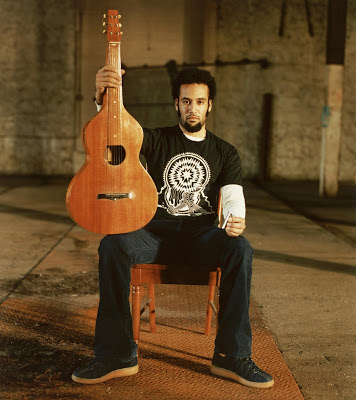 Ben Harper and his Weissenborn.Surprisingly, that's about it. I've pretty much satiated my desire for guitars, other than what's above. I have a banjo, mandolin, ukulele, and a couple of resonators, so I'm pretty much flush. At least until I take up the fiddle :-)
Ben Harper and his Weissenborn.Surprisingly, that's about it. I've pretty much satiated my desire for guitars, other than what's above. I have a banjo, mandolin, ukulele, and a couple of resonators, so I'm pretty much flush. At least until I take up the fiddle :-)
It's interesting to see that the 2012 and 2014 lists are pretty different. It's not that I've aquired everything (or anything, for that matter) from the 2012 list. But tastes and interests change. As much as I'm first and foremost a guitar player, my interest in banjo and resonator guitars has taken center-stage recently. That being said, all of the stuff on the 2012 list is still appealing to me. I was seriously considering a Martin OM-18 Authentic as my 40th birthday present, but ended up going for a Collings D1ASB instead. Would still like that Authentic, though.
A guitarist's toy roll
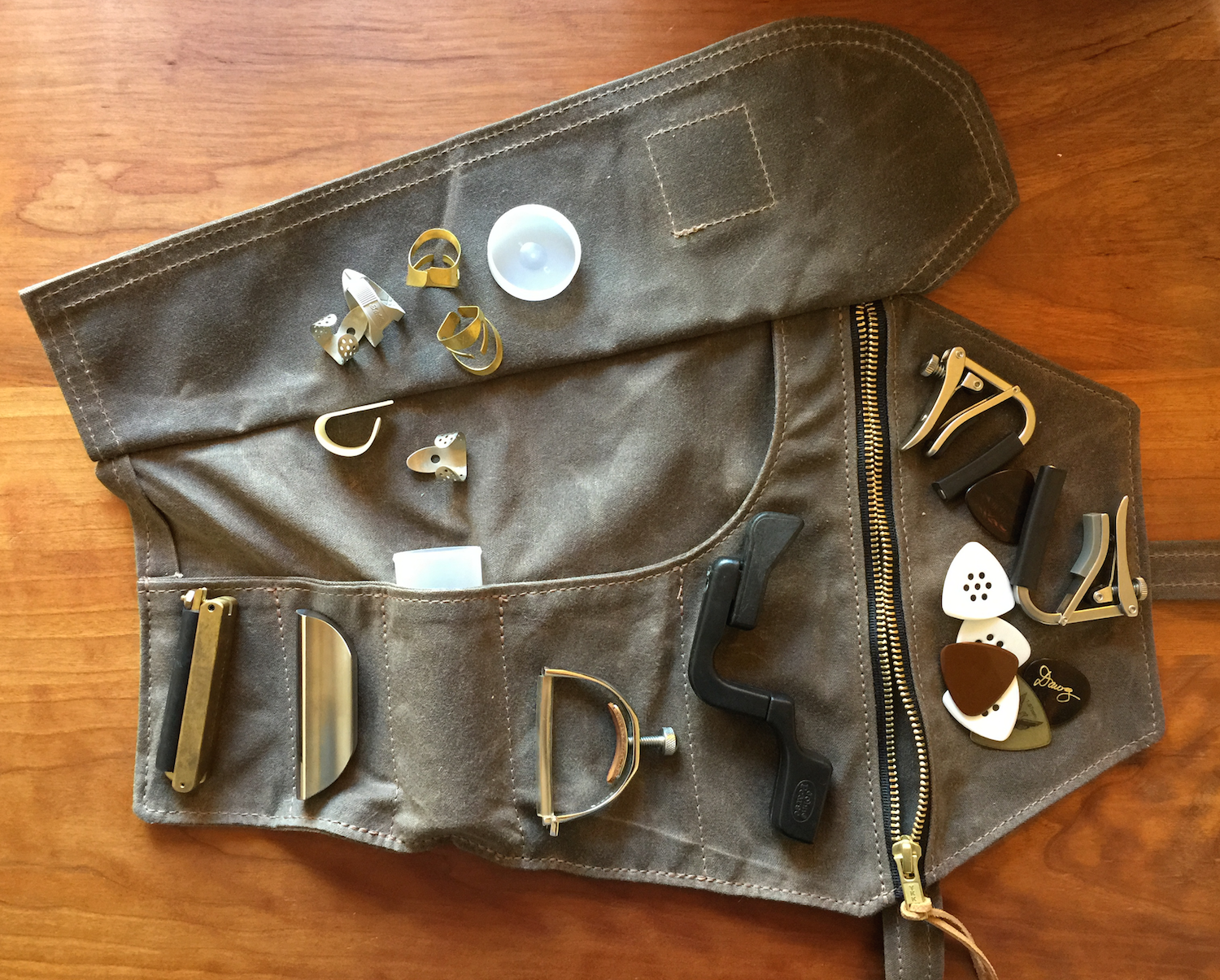
Now that I'm becoming proficient on a few different stringed instruments, most notably the banjo and lap-slide guitar in addition to guitar, I've been looking for a way to deal with with increase amount of gear that comes with these. In particular, my desk had become a mess of capos, finger- and flat-picks, and slides. In addition to desktop organization, being able to have everything in one place and ready to grab to take to a jam is important. I looked into little boxes and containers, but nothing seemed to work for this assortment of bits (i.e., some long, heavy, skinny things like slides and dobro capos; metal finger-picks that shouldn't get squished; my favorite picks that are easy to lose).
It dawned on me that a tool rool, like I've seen bicylists use (and seem popular with motorcyclists) might work. I ended up googling "waxed canvas tool rool" and ran across the Coffin Tool Roll by Red Clouds Collective. At $65 it's not cheap, but it's handmade by hipsters in Oregon and is a quality product that should last a lifetime. Along with multiple slots/pockets, it has a zippered pouch that seemed perfect for securing those little pieces (like picks) that are easy to lose. I found a 10% off coupon code which basically offset the shipping, and a few days later it arrived.
Rather than calling it a "guitarist's tool roll," which makes me think of the things like truss rod wrenches and small screwdrivers to tighten tuners etc., I think of it as a "guitarist's toy roll" since it's for all the little gadgets and gizmos that are commonly used in playing acoustic music.
1930 National Tricone Squareneck
I have become increasingly enamored with my Beard Vintage R squareneck resonator recently. I've had it for years, but have just rediscovered it in the back of my closet. While I’m clearly still a beginner, I can play proficiently in an intermediate bluegrass jam, assuming things stay in the key of G or A.
Over the weekend I headed over to the semi-annual Philadelphia Guitar show. I hadn't been in a couple of years, and I’ve never purchased a guitar there, but it’s a fun way to spend a couple of hours. Since I’m pretty flush with flattop guitars, other than the vintage Martins and Gibsons I couldn’t afford, I spent more of my time browsing the vintage Dobros, Nationals, and other lap steels. There were a couple of interesting Gibson house-brand instruments with original Hawaiian set-ups (a blond Kalamazoo Oriole and a sunburst Recording King Carson Robison Model-K), but the guitar that captured my attention was a National Style 1 Squareneck Tricone.
This particular National was being offered by a dealer from Arkansas who had made his way up to Philadelphia for the show. He acquired the instrument from the family of the original owner in Kansas City. The serial number dates it to 1930, and it is in remarkable condition. There are no big dings or dents, and it is purported to be all original, including the tuners (i.e., have the correct engravings) and cones. The dealer even mentioned that the screws on the coverplate look untouched, so the coverplate may never have been removed.
![]()
![]()
Cavins tenor guitar - Part 2: Sonic representations of wasabi, grapefruit, and orange
This is Part 2 of my series chronicling design, construction, and eventual delivery of a tenor guitar built by David Cavins. See Part 1 here.
As David and I begin discussing this project, he asks me think about what I want it to sound like. But rather than only sticking to the standard lexicon that guitar geeks use (e.g., “warm,” “dry,” “woody”, “lush”, etc.), he encourages me to come up with some other descriptive works to translate the sound in my head into other modes. Here’s a snippet of the email I wrote, trying to capture these sounds:
"Spicy, but like wasabi, rather than jalapeños...there's heat, but it decays quickly so that the flavor of each string can shine.
Another flavor that might be a good descriptor is grapefruit: refreshing, some edge to it, with a shade of sweetness. Not as light or sweet as lemonade; more personality than orange juice.
Translating sound to color, I'm thinking orange. But not electric or neon orange, but instead the vibrant, organic orange of leaves changing color in the fall."
Amazingly, this description makes sense to him. He also has me write about other guitars that I’ve played and liked/disliked, so that we can get on the same page about how we hear and describe acoustic instruments. I tell him about my new Collings D1A, what I like about D-18s, what I dislike about a particular guitar that a friend of mine owns, and I try to describe my playing style and goals.
With this information in mind, we schedule a phone call. Although we spend part of that 90 minutes catching up, most is spent talking guitars. It's a joy to hear David's familiar voice after all of these years, and to be able to tap into his experiences with different design philosophies, construction techniques, and tonewoods is amazing. I learn how David approached the first guitars he designed, building them in pairs with everything the same (or as close as possible) except for one parameter that he’d change. As a scientist, I appreciate this process, and as a guitar geek (and builder of one instrument), I know enough to be dangerous. I learn about the “live back” that he builds...that he doesn’t just want the back to reflect the vibrations that the top produces, but that the back itself can generate sound.
David and I have similar values when it comes to the sociopolitical and environmental issues surrounding wood. He aims to source as much of his tonewood locally as possible, and avoids endangered, or questionably harvested, woods. I’m on board with this 100%. I think that generally the acoustic guitar market is so focused on particular tonewoods that it has ignored (a) the excellent sustainable materials available right in our own backyards (figuratively and literally) and (b) the luthier has a huge part in putting his/her stamp on the tonal signature of the instrument with the design and construction choices that are made and implemented.
We decide to go with Appalachian (“red”) spruce for the top, and sugar maple for the back and sides. David is fortunate to have a top supplier of these materials near him in Missouri, and these are domestic woods that both will have the tonal properties that we are aiming for as well as being responsible environmental choices.
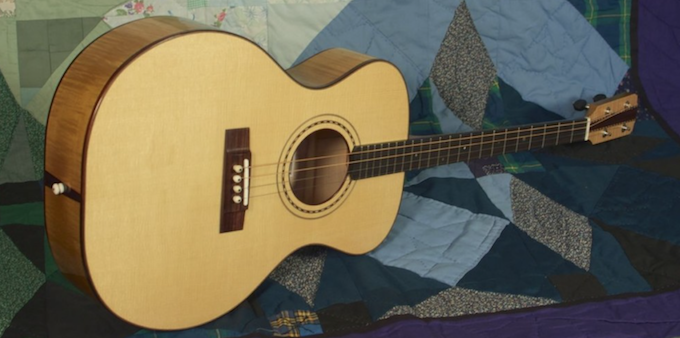 A Cavins tenor guitar in sugar maple; from cavinsguitars.com.
A Cavins tenor guitar in sugar maple; from cavinsguitars.com.
To date, David has build about 30 guitars, although some are unnumbered, so mine will be serial #19. He has built a couple of tenors previously, with a recent one also being red spruce and sugar maple. Now that we have the basic framework in place (e.g., the tonal goals and main woods selected), the next step will be some of the cosmetic choices...Stay tuned for Part 3.
Cavins tenor guitar - Part 1: What has 4 strings and reconnects me with David Cavins?
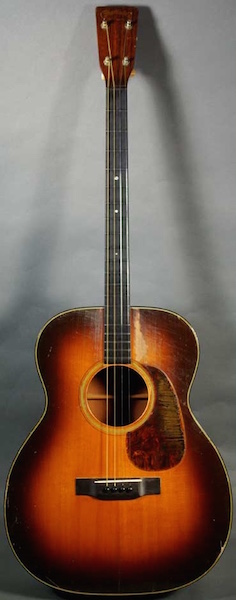 image from sprucetreemusic.comWhat’s next, when you have several 6-string guitars, a 12-string, a banjo, a mandolin, a ukulele, and a dobro? A tenor guitar, that’s what!
image from sprucetreemusic.comWhat’s next, when you have several 6-string guitars, a 12-string, a banjo, a mandolin, a ukulele, and a dobro? A tenor guitar, that’s what!
A tenor guitar is an instrument that was popular nearly 100 years ago (read more here). It’s essentially a 4-string, short-scale guitar, although it’s often tuned to CGDA (low to high), like a viola/mandola, or to GDAE (low to high) like an octave mandolin, but, of course, with four instead of eight strings. Admittedly, I’m brand new to the tenor world, but I’m intrigued and think there’s a lot of fun to be had playing one.
Why would one want a tenor guitar? For variety, of course! Chords will sound different, rhythm playing will be punchier, and you'll approach melodies differently than when playing a standard 6-string guitar. It’s good for my brain to figure out how to maneuver around different fretboards, and it will provide a new sound when playing with other people.
The usual suspects (i.e., Martin and Gibson on the high end, and lots of budget brands) built tenors back in the day, and a few contemporary builders (e.g., Collings) are doing them now. But since a tenor is totally new to me, and I don’t have any preconceptions of what one is supposed to be like, I figured it was time to venture away from factory instruments and work with a luthier on a custom build.
I met David Cavins just over 20 years ago, when we moved into the same dorm at Grinnell College. For the next two years, until I graduated, we ran in the same circles, playing music together, and cooking hot-as-can-be midwest-inspired Mexican food (potato and corn enchildas...yum!). David had an enthusiasm for everything he did, with an approach that always struck a balance between the analytical/scientific and artistic/aesthetic. He was (and is) one of the most thoughtful, open, and genuine people I've ever met, and he introduced me to Americana music, which has stayed with me to this day. However, once I went off to grad school and got immersed in my studies and subsequent career we lost touch, although I thought of him often.
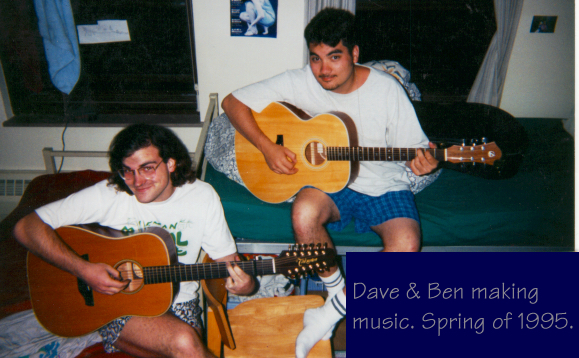
In December of 2011 we reconnected, after David found my blog about the guitar building class I took at Vermont Instruments School of Lutherie. I was excited to be back in touch with him, and was especially thrilled to learn that he also had developed an interest in guitar building. However, while I'm a chroinc dabbler in things, David goes all in, and he was in the midst of setting up shop and developing his line of Cavins Guitars.
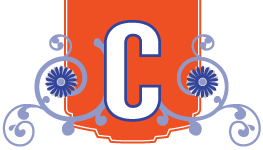 For the next few years we’d shoot email or tweets back and forth whenever we saw interesting articles about guitar building. But about a month ago, as I was thinking about tenor guitars, I asked David if he’d be willing to build one for me, and he agreed. What will follow over the next couple of months is a series of posts that will chronicle the build, from my end. This is going to be a fun project, and I can’t imagine doing it with anyone else but David.
For the next few years we’d shoot email or tweets back and forth whenever we saw interesting articles about guitar building. But about a month ago, as I was thinking about tenor guitars, I asked David if he’d be willing to build one for me, and he agreed. What will follow over the next couple of months is a series of posts that will chronicle the build, from my end. This is going to be a fun project, and I can’t imagine doing it with anyone else but David.
 Monday, October 20, 2014 |
Monday, October 20, 2014 |  Post a Comment | tagged
Post a Comment | tagged  david cavins,
david cavins,  grinnell,
grinnell,  guitar,
guitar,  lutherie,
lutherie,  tenor guitar
tenor guitar  Friday, September 5, 2014 |
Friday, September 5, 2014 |  Post a Comment | tagged
Post a Comment | tagged  acoustic music works,
acoustic music works,  collings,
collings,  guitar,
guitar,  waterloo
waterloo Thank you Mr. Collings, you made this D1A for me
A recent sampling of eight of Collings dreadnoughts, which culminated in the purchase of a D1A with a sunburst finish, has me reflecting on my attraction to Collings guitars. I have had the good fortune to own serveral Collings across the years, moving from an OM2HA to OM1SB to D1VSB to Baby 2H to CJMhASB, and now to a D1ASB (yes, I know this is a lot of acronyms, but the Collings naming/numbering system is actually pretty logical and informative when you get the hang of it). Although I have been going through a Martin phase over the last few years (see here, here, and here), I consistently have liked (and usually loved) just about every Collings guitars I've had the opportunity to play.
40 reasons to drive 9 hours to try 8 Collings guitars
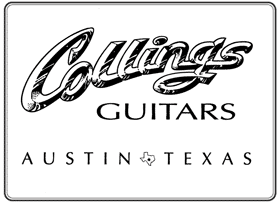 Having just turned the corner on 40, I decided that I could splurge for a new guitar. I love D-18-style guitars (i.e., mahogany and spruce dreadnoughts), and wanted something with even more cut and volume than a Martin D-18 (which I have and love; it's a classic bluegrass, folk, and singer-songwriter guitar). I dig Collings guitars, so I quicky honed in on a Collings D1A. In the past I had a D1VSB (i.e., vintage neck and sunburst top) that I traded for another Collings some years back, so I had a pretty good idea that this was the direction I wanted to go.
Having just turned the corner on 40, I decided that I could splurge for a new guitar. I love D-18-style guitars (i.e., mahogany and spruce dreadnoughts), and wanted something with even more cut and volume than a Martin D-18 (which I have and love; it's a classic bluegrass, folk, and singer-songwriter guitar). I dig Collings guitars, so I quicky honed in on a Collings D1A. In the past I had a D1VSB (i.e., vintage neck and sunburst top) that I traded for another Collings some years back, so I had a pretty good idea that this was the direction I wanted to go.
It's not as simple as just running down to a local shop and getting a D1A (especially since Acoustic Roots closed several years ago); there are lots of different options that one can get on top of the standard adirondack spruce and mahogany configuration:
- standard sitka bracing vs. adirondack bracing
- neck profile and corresponding string spacing at the saddle: 1-11/16", 1-23/32", 1-3/4" standard, vintage now, and vintage necks
- standard vs. varnish finish
- standard bracing or sans tongue brace
- sunburst or natural finish
- standard or vintage/cut-through saddle
- other cosmetic bits like bound fretboards and pegheads, back strips, etc.
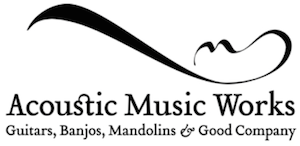 Rather than ordering online, I decided I had to get my hands and ears on guitars with these various options for a purchase of this magnitude. Luckily, a top Collings dealer is within driving distance, so I decided to take a road trip to Acoustic Music works in Pittsburgh. They have about 200 Collings in stock, and a great variety of different D1A configurations.
Rather than ordering online, I decided I had to get my hands and ears on guitars with these various options for a purchase of this magnitude. Luckily, a top Collings dealer is within driving distance, so I decided to take a road trip to Acoustic Music works in Pittsburgh. They have about 200 Collings in stock, and a great variety of different D1A configurations.
 Tuesday, August 19, 2014 |
Tuesday, August 19, 2014 |  Post a Comment | tagged
Post a Comment | tagged  acoustic music works,
acoustic music works,  collings,
collings,  d-18,
d-18,  d1a,
d1a,  guitar
guitar 
